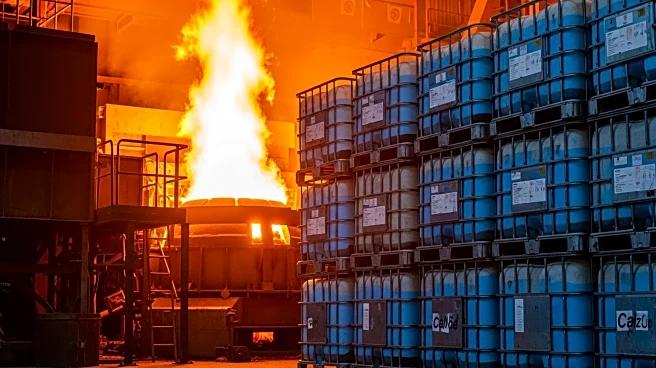What is the story about?
What's Happening?
In September, the Engineering and Construction Cost Indicator, which tracks wage and material inflation in the engineering, procurement, and construction sectors, showed a decline to 58.6 from 63.0 in August. Despite this decrease, the index still indicates upward pricing pressure. The sub-indicator for materials and equipment costs rose by 5.2 points to 55.5, while subcontractor labor costs fell to 66.0 from 68.5 in August. Notably, copper-based wire and cable experienced a significant price drop of 25.0 points, whereas prices for turbines, fabricated structural steel, and ANSI pumps and compressors increased. The six-month outlook for future construction costs saw a modest rise to 75.9, with ten out of twelve categories experiencing decreases, including alloy steel pipe and carbon steel pipe.
Why It's Important?
The slowdown in construction cost increases is significant for the U.S. construction industry, which has been grappling with inflationary pressures. The decline in the cost indicator suggests a potential easing of cost burdens for construction companies, which could lead to more stable project budgets and timelines. However, the continued upward pressure on prices, particularly in materials like redi-mix concrete and copper-based wire, indicates that the industry may still face challenges in managing costs. This situation affects stakeholders across the construction supply chain, including contractors, suppliers, and clients, who must navigate these fluctuating costs.
What's Next?
As the construction industry continues to adapt to these cost changes, companies may need to reassess their procurement strategies and project planning to mitigate the impact of price volatility. Stakeholders will likely monitor the cost indicators closely to anticipate further changes and adjust their operations accordingly. The industry may also see increased efforts to secure long-term contracts and explore alternative materials to manage costs effectively.
AI Generated Content
Do you find this article useful?














